Apple variety Slavyanka
Old apple varieties, although they do not conquer with external bright beauty, are still considered reliable. In 1889, the famous scientist I.V. Michurin decided to improve the traditional Antonovka by fertilizing its flowers with pineapple Reneth pollen. The seeds obtained from crossing were sown and sprouted in 1890. The variety received the proud name Slavyanka and the author himself called it "... excellent in all respects and very productive ...". The new variety brought its first harvest 7 years after planting - in 1896, and immediately reassured the creator with the promise of future yield. The apple tree is great for growing in the northern regions.
Description
The tree is of medium vigor and compact. The rootstock affects growth rates. On seedlings of cultivated varieties, our heroine shows excellent development and a better harvest in large quantities. Vaccination for forest or Chinese species somewhat lowers these indicators. The Siberian berry apple tree is also not very suitable for the rootstock - its good qualities also decrease. A feature of Slavyanka is the independent formation of a correct wide-paniculate crown. It is sparse and consists of relatively erect branches. The bark on young shoots is red-brown, then a grayish bloom appears. Lentils are light, few in number. Moderate leafiness. The leaves are small, oval in shape, with a rounded base and a sharply elongated apex, the edge of the leaf is double-toothed, slightly wavy. The surface of the leaf plate is leathery, dull, with moderately pronounced venation, pubescent, dark greenish-gray, slightly lighter on the reverse side. The petiole is ordinary, light-colored, sometimes with traces of anthocyanin coloration. Stipule oblong-lanceolate.
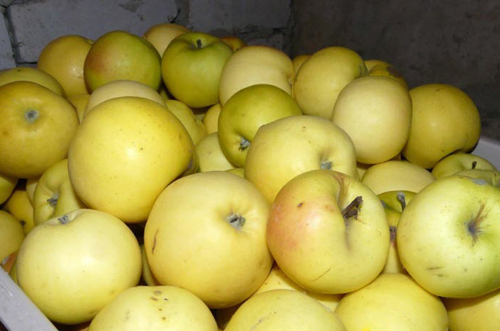
The fruits of the variety are round-shaped or flat-round, weak or medium-silvery, sometimes with longitudinal depressions, which resemble the fruits of Babushkino's apple tree, a narrow seam can be pronounced. The skin is quite dense, smooth, shiny, oily to the touch. During the ripeness period, the skin is yellowish-greenish in color. While lying down, acquiring consumer ripeness, the Slavyanka fruits change color to light yellow, sometimes with a slight scarlet blush on the side that was more illuminated by sunlight. Whitish, sometimes with a grayish center, subcutaneous points are located over the entire surface of the apple, well distinguishable. Fruit weight is below average or slightly more - 80 - 107 grams. Height 60 mm, width 70 mm. The funnel is not very deep, narrow, without traces of rusting. The peduncle is thick, short, 10 mm long, the upper end is strongly thickened with a lateral influx of green, rarely reaches the edges of the funnel. The calyx is large and wide, closed, there are 5 sepals, they are short and wide, inclined towards the inside of the calyx. The saucer is shallow, with medium-silvery walls.
The flesh of the Slavyanka fruit is white, juicy, tender, rather loose when it reaches full maturity. During lying down, by April, it can become mealy. The taste is very good, pleasant, sweet with a slight sourness, the aroma is very delicate. Taste qualities are estimated at 4.5 - 5 points. The seed nest of the variety is narrow, small in size, with closed chambers, separated from the pod tube by a thick layer of solid pulp, which is a rare feature for other apple trees. Each seed chamber contains 2 seeds, well filled, medium size, light brown in color. 100 grams of pulp contains: 13.2% dry matter, 0.46% acid, 10.7% sugars, 12.2 mg ascorbic acid. The ratio of sugar to acid is 23.
Characteristics
- Having planted Slavyanka saplings, the harvest will have to wait 5 - 6 years, which, in general, is a good indicator;
- According to the results of thirty years of observation by I. V. Michurin, the variety was found to be highly resistant to spring morning frosts, withstanding frosts above -5 ° C.The ovary appears even in troubled years, when in other varieties the flowers die from frost;
- the yield of the apple tree is quite high - up to 200 kg per tree, and at the same time it is stable. But this indicator can be significantly influenced by the growing conditions;
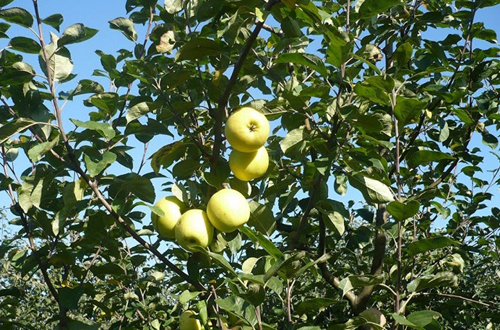
- thanks to the short stalk, apples give a small percentage of carrion, even withstanding strong winds. This makes it possible to grow the species even in places not protected from the wind;
- according to the terms of consumption, the culture belongs to the winter. Harvesting maturity occurs in the second half of September. To reach consumer ripeness, the harvest must last until November;
- resistance to diseases and pests is high. Fruits and leaves are well resistant to fungal pathogens;
- the self-fertility of the apple tree is high, the variety shows a good level of productivity even with an isolated planting, pollinating with its own pollen;
- in central and northern Russia, Slavyanka's winter hardiness is high. During the observation period, the bark and stem were never damaged by frost;
- drought resistance of the plant is good;
- the resistance of the bark to sunburn and sudden temperature changes in winter and spring is also high;
- the keeping quality of apples is excellent. The fruits, without spoiling, will last until the end of winter, and if the storage rules are observed, until mid-spring;
- the way of use is universal. Of course, winter varieties are best used in their natural form, but the fruits are suitable for making marshmallows and marmalade, and they are also used to make rather rare blanks now - soaked and salted apples.
Planting and leaving
The season for planting an apple tree is chosen based on the climatic characteristics of the region. Autumn is a great time in the southern regions, and spring is in the northern regions. With regard to soils, Slavyanka is undemanding. The tree shows almost the same growth and productivity on dry sandstones and water-absorbing chernozems. The difference can only be in the size and color of the fruits - on dry soils the apples are slightly yellower and somewhat smaller, and on chernozems, the color is greener, and the size is larger. The yield is not affected by the proximity to other fruit trees, but the distance between them should be maintained as follows: 3 - 3.5 meters between plants in a row, row spacing - up to 5 meters. The care does not differ in features and includes standard procedures - watering, feeding, loosening and weeding of near-stem circles, pruning.
Slavyanka is an excellent proof that you should not be fooled by bright pictures depicting giant and brightly colored fruits. Old varieties are no worse, and in many respects even better than many new products. The special value of the Michurin apple tree is its excellent winter hardiness, immunity (especially to scab), high yield and excellent taste. The culture is highly resistant to adverse conditions, which makes it an indispensable tree in the gardens of the northern regions.
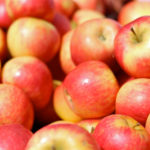
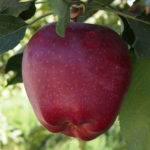
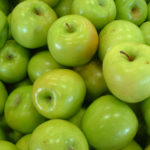
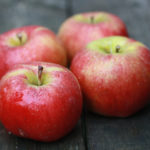
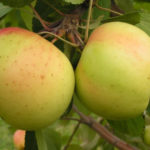
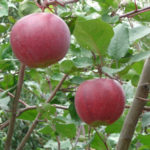



I remember the taste of Antonovka from childhood, and as for me, Slavyanka is not much different from her. If carefully removed from the tree, skilfully stored in winter, then the last apples, albeit a little wrinkled, leave at the end of April. The aroma is excellent, on the veranda where they are stored, my head is spinning. They go for jam, jam, juice, drying. But the most important thing is the soaked apples. None of the varieties fit so well, many darken. And Slavyanka retains both color and taste. The variety is unpretentious, with skillful pruning and care, it bears fruit for a long time. My trees are already eight years old, and I remove up to 150 kg of fruits from each.